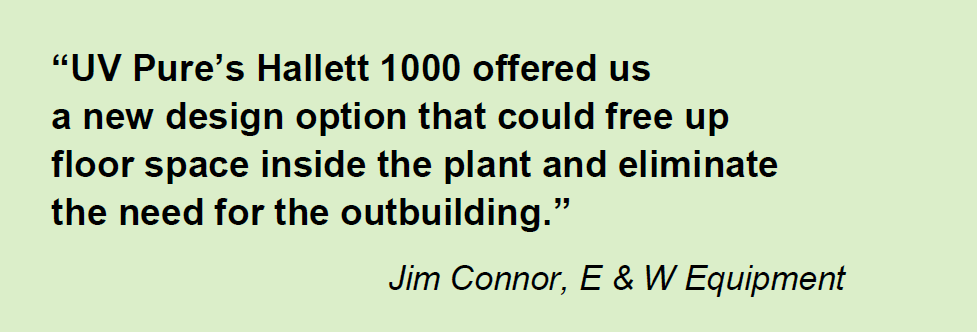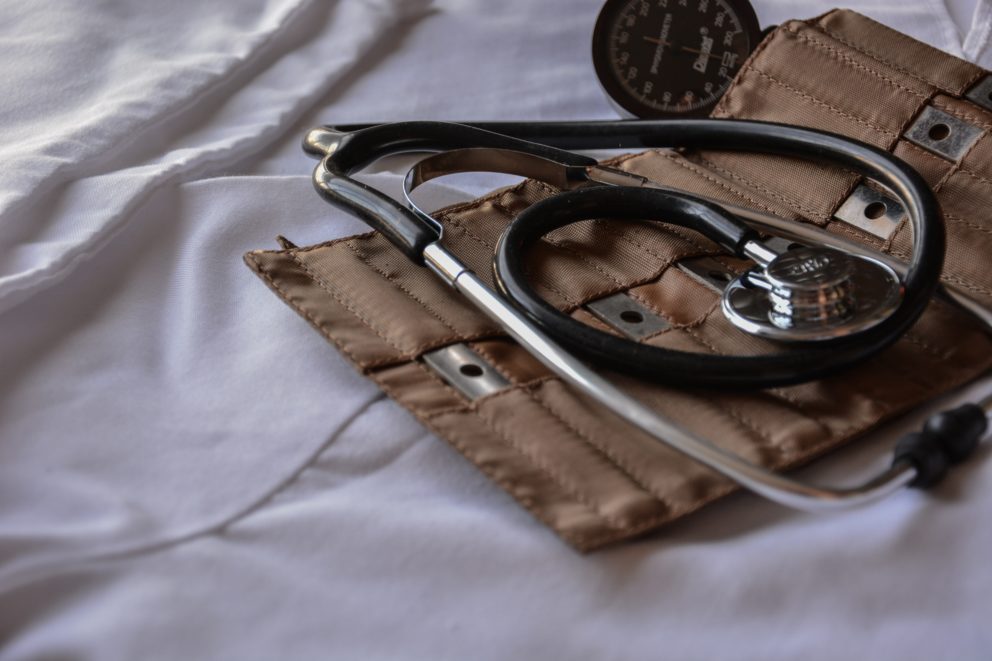
System Design Specifications
Application: Onsite wastewater treatment
Location: Captain’s Way Development, Milton, DE, USA
Commissioned: April 2021
System: 3 x UV Pure Hallett® 1000
(3 x continuous duty, 1 x standby)
Capacity: 195 US gpm (738 L/min)
Minimum UV dose: 30 mJ/cm2
Minimum UVT: 65%
Fecal coliform limit: < 200 CFU/100 mL
Treatment process: Purestream SBR
Plant capacity (ADF): 70,000 US gpd (265 m3/day)
Value is one of the most important considerations for developers when they are selecting components for onsite wastewater treatment plants (WWTP).
So when UV Pure introduced the higher flow rate Hallett® 1000 systems in 2019, Jim Connor of E & W Equipment knew it could provide better value for his client. Connor was working with Captain’s Way Developments LLC on a new onsite wastewater plant for the Captain’s Way community in Milton, Delaware, USA.
In the design stage, they had specified a conven- tional UV system that uses submerged lamps in a contact chamber to provide disinfection of treated effluent from a Purestream SBR packaged plant.

But that design, along with the second redundant UV train, occupied significant floor space in the building.
Because of the space constraints, a separate out-building was needed to house a distribution manifold and valves that controlled the release of treated effluent into a series of rapid infiltration basins.
Design modifications add up to big savings
 “UV Pure’s Hallett 1000 offered us a new design option that could free up floor space inside the plant and eliminate the need for the outbuilding,” Connor said. “The Hallett systems are smaller and can operate vertically, which allowed us to mount the systems on the wall and create sufficient space to move the discharge piping and control valves inside the main building.”
“UV Pure’s Hallett 1000 offered us a new design option that could free up floor space inside the plant and eliminate the need for the outbuilding,” Connor said. “The Hallett systems are smaller and can operate vertically, which allowed us to mount the systems on the wall and create sufficient space to move the discharge piping and control valves inside the main building.”
Further savings were gained by eliminating the concrete equipment pads that the conventional UV systems needed. Once these savings, along with the lower unit costs of the Hallett systems were factored in, Captain’s Way Developments was able to reduce the cost of the treatment plant by nearly $50,000.
“The capital savings that the Hallett 1000 offered, combined with its ease of use and low maintenance requirements, made it an easy decision to switch,” Connor said.
Built-in UV sensors add value and safety
UV Pure’s Crossfire Technology® incorporates dual UV lamps that are mounted in air, rather than water. This design also adds four integrated sensors that continually monitor UV transmittance (UVT) and UV intensity (UVI).
For the Captain’s Way WWTP and other budget-conscious facilities, choosing Hallett 1000 eliminates the need for a costly external UV sensor—providing additional capital savings of up to $15,000.
For the community and the environment, the sensors provide an extra measure of safety since the Hallett systems are always monitoring effluent quality and will trigger an alarm if treatment parameters are not within specifications.
4-20 mA/Modbus output capabilities enable the units to communicate with the plant controls, which can automatically trigger a notification to the operator, or even shut down the plant until an operator can correct the situation.
Smart controls for energy savings
The integration to the plant controls also allows operators to configure the Hallett 1000 systems to activate only when needed. This is a significant benefit for processes such as the Purestream SBR and other packaged onsite systems, which release treated effluent intermittently.
Advanced lamp and ballast technology enables Hallett systems to perform up to a dozen on/off cycles per day—a feature that helps reduce electricity consumption and extend lamp life.
“During commissioning and training, the operators told us they really liked the UV Pure systems,” Connor said. “It was their first time seeing the Hallett 1000 and they thought it had some good advantages, such as automatic cleaning and lamp changes that can be done without the risk of coming into contact with the effluent.”
To download the case study, click here.






 User Interface
User Interface
 as high-water temperature. If this contact is open, the system is operating under normality and if
as high-water temperature. If this contact is open, the system is operating under normality and if 





 UV disinfection systems intended for use at a public or commercial site (e.g. hospital, campground, hotel, etc.) generally require certification. In these settings, certification is essential for protecting public health, meeting compliance obligations and managing liability.
UV disinfection systems intended for use at a public or commercial site (e.g. hospital, campground, hotel, etc.) generally require certification. In these settings, certification is essential for protecting public health, meeting compliance obligations and managing liability.
 Each technology has a unique set of advantages and disadvantages. For example, chemical disinfection using chlorine is highly reliable and inexpensive, but it poses safety risks in the handling of chlorine and the creating toxic byproducts.
Each technology has a unique set of advantages and disadvantages. For example, chemical disinfection using chlorine is highly reliable and inexpensive, but it poses safety risks in the handling of chlorine and the creating toxic byproducts.